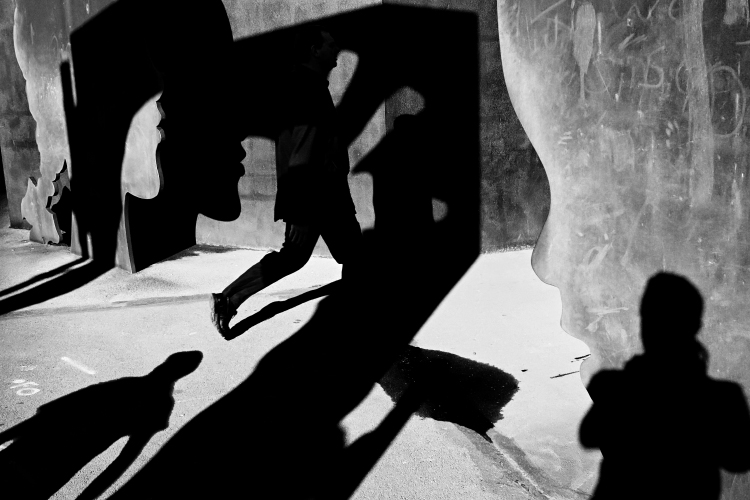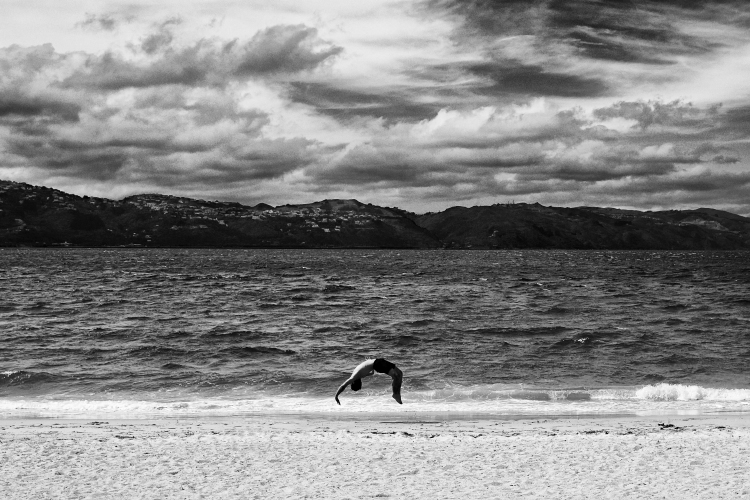Wellington Observed
A Photographic Portfolio by Camus Wyatt
HAMISH CLAYTON

CAMUS WYATT Wellington, June 2012 2012 Digital photograph
Camus Wyatt has been taking photographs for the last six years. At Victoria University, enrolled in a BA in History and International Relations, he quickly became enamoured with the power of the photojournalism he encountered in the course of his study. After watching the Anne Makepeace documentary Robert Capa: In Love And War (2003), he felt the urge to take photographs of his own.
While he has not received much formal training, Wyatt resists the term ‘self-taught’, feeling that this might ‘imply development in some kind of vacuum’. It is a nuanced thought, for alongside the palpable influence of well-known photographers such as Henri Cartier-Bresson, Robert Frank, André Kertész and Josef Koudelka, Wyatt’s tightly controlled formalism seems to nod to a range of visual references.
A retro-cool design sense underpins images such as Wellington, October 2012, where two small tables either side of a sliding glass door are shot to striking, clinical effect. Ultra-clean lines of bright sunlight and crisp black shadows spin commonplace domesticity into an elegant, restrained modernist study of light and form. While the white light and black shadow of Wellington, July 2012 feels just as tightly arranged, it is deployed to altogether different psychological ends; here, those beautifully observed planes and shadows hint at something as menacing as de Chirico’s melancholy streets. Elsewhere the suggestion of the surreal is pushed to utterly compelling limits; the dazzling play of form and shadow in Wellington, June 2012 is almost too dizzying to take in without prior knowledge of the Cathryn Munro sculpture, Per Capita, which Wyatt’s photograph remarkably disassembles.
Wyatt’s formalism, however, is not a mere exercise in aesthetic experiment. If his chosen subject is the everyday moment, his concern is to imbue the commonplace with ‘a sense of curiosity; perhaps a new appreciation’.
This, then, is the point of such elegant, taut observation, and it finds subtle registers in even the less overtly ‘formal’ works. A second image titled Wellington, October 2012 ― but this of umbrella-carrying pedestrians ― becomes weirdly hypnotic the more one ponders the recurring motif, while the beauty of the seemingly straightforward landscape of Wellington, November 2012 relies on the symmetry of rich, even textures ― almost as if painted or sketched ― observed in the parallel bands of sky, sea, and sand, and the subtle formalism slyly winked at with the playful gesture of the small figure, back-flipping in a perfectly placed semi-circle.

CAMUS WYATT Wellington, October 2012 2012 Digital photograph

CAMUS WYATT Wellington, July 2012 2012 Digital photograph

CAMUS WYATT Wellington, October 2012 2012 Digital photograph

CAMUS WYATT Wellington, November 2012 2012 Digital photograph
